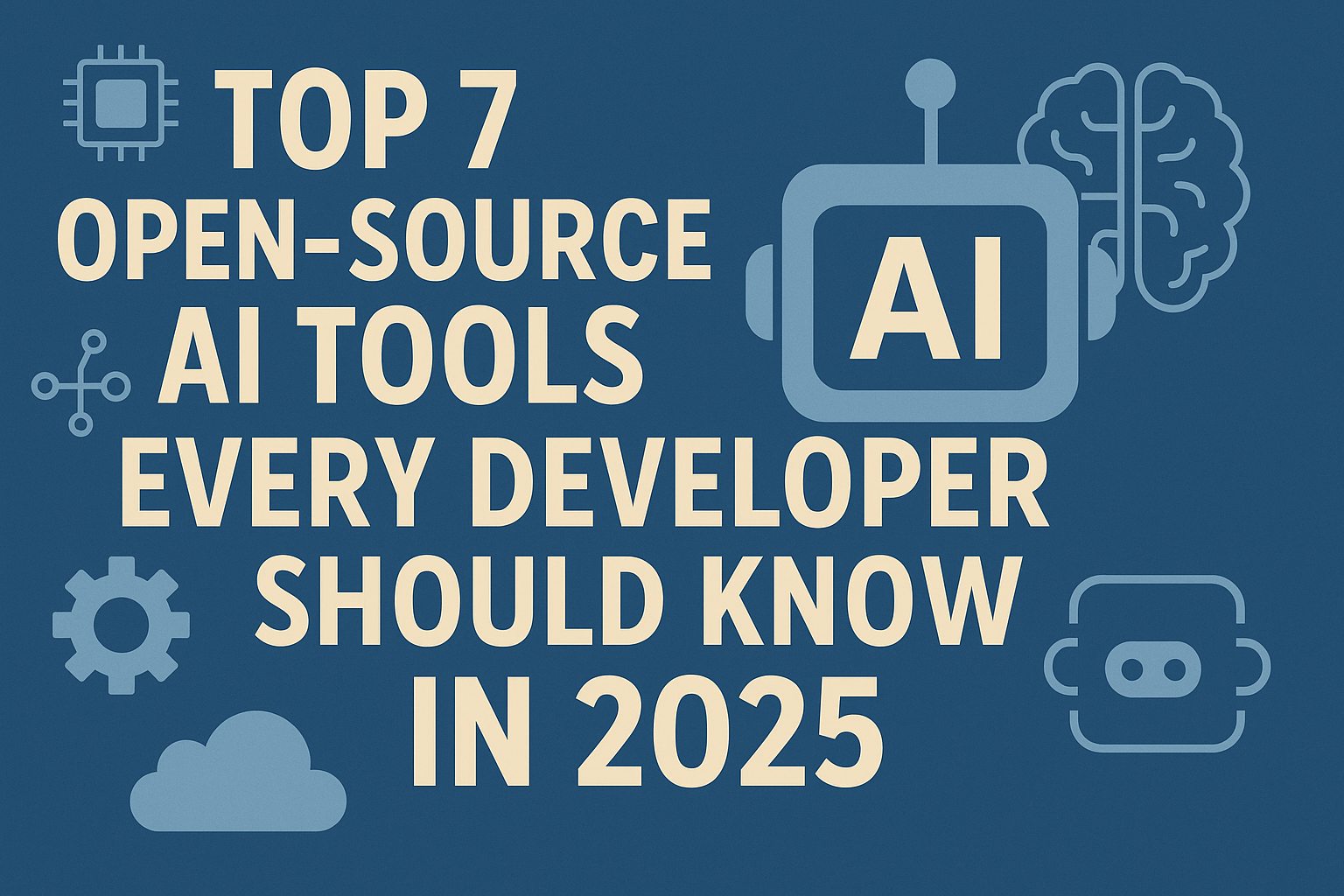
Artificial intelligence is no longer just for tech giants or research labs—it’s shaping the way all developers build software. In 2025, the open-source AI ecosystem is more vibrant than ever, offering powerful tools for everything from natural language processing to computer vision and automation.
Here’s a curated list of the top 7 open-source AI tools you should have on your radar this year:
1. TensorFlow
Still a powerhouse in deep learning, TensorFlow continues to dominate in 2025 with robust community support, scalable production tools, and seamless deployment options. Its high-level Keras API and flexible ecosystem make it a staple for everything from research to real-world applications.
Key Uses: Neural networks, computer vision, NLP, production-ready ML.
2. PyTorch
Favored by researchers and increasingly used in industry, PyTorch is known for its intuitive design, dynamic computation graphs, and growing library ecosystem. It’s the foundation for many state-of-the-art AI models and has great support for both prototyping and scaling.
Key Uses: Deep learning research, natural language processing, computer vision, reinforcement learning.
3. Hugging Face Transformers
If you work with text, Hugging Face Transformers is a must-have. This library puts the latest language models (like GPT, BERT, and T5) at your fingertips with easy APIs and pre-trained models.
Key Uses: Text classification, chatbots, summarization, question-answering.
4. OpenCV
OpenCV (Open Source Computer Vision Library) is still the go-to tool for image and video processing, supporting everything from real-time face detection to augmented reality. With Python and C++ APIs, it’s ideal for integrating vision into your apps.
Key Uses: Image analysis, facial recognition, object detection, video analytics.
5. ONNX Runtime
ONNX Runtime is making it easier to deploy AI models across platforms and languages. Convert models from TensorFlow, PyTorch, or other frameworks into the universal ONNX format and run them efficiently anywhere—even on mobile and edge devices.
Key Uses: Model interoperability, optimized inference, cross-platform deployment.
6. Rasa
Want to build smart, customizable chatbots or virtual assistants? Rasa offers a flexible, open-source solution with NLU, dialogue management, and integrations for voice and text. It’s privacy-first and easily deployed on your own infrastructure.
Key Uses: Conversational AI, chatbots, virtual assistants, customer support automation.
7. FastAI
FastAI democratizes AI with easy-to-use interfaces built on top of PyTorch. It’s perfect for rapid prototyping, education, and practical ML projects, providing state-of-the-art results with minimal code.
Key Uses: Rapid AI prototyping, tabular data, image classification, NLP.
Honorable Mentions
- Stable Diffusion (open-source image generation)
- DVC (Data Version Control for ML projects)
- Ray (distributed AI and ML workloads)
Conclusion
Open-source AI tools empower developers at all levels to innovate and build smarter software. Whether you’re launching a startup, experimenting with side projects, or deploying at scale, these seven tools will help you stay ahead in the fast-moving AI landscape of 2025.
Did we miss your favorite AI tool? Let us know in the comments!

